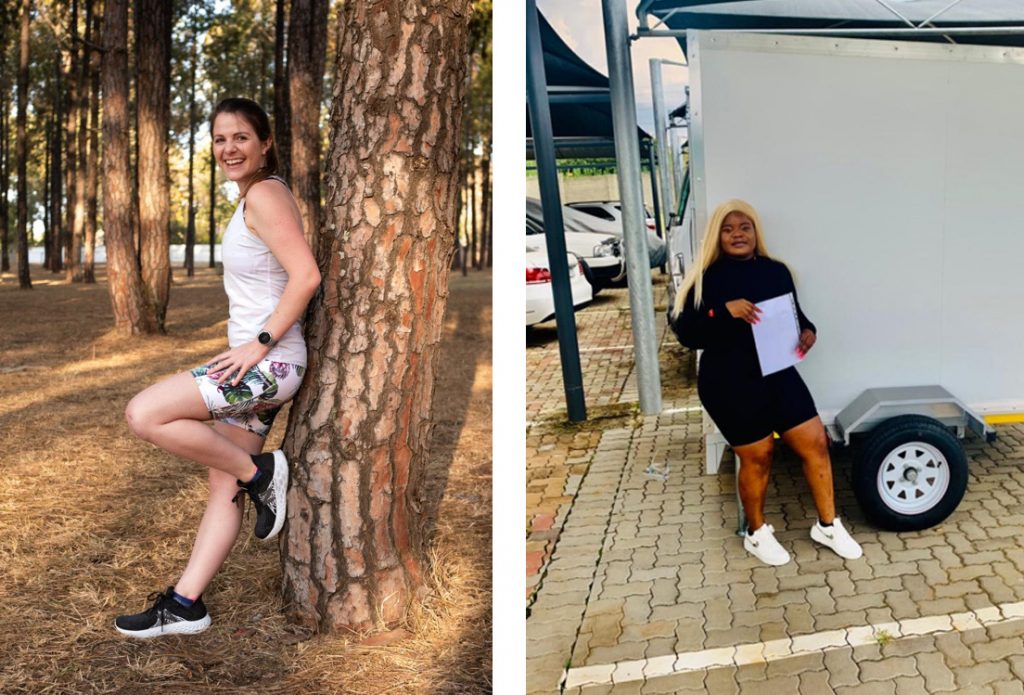The power of learnerships to transform youth employment in South Africa

Learnerships are powerful tools to address an age-old quandary – employers want people with skills and practical knowledge to hit the ground running and be immediately productive, while young people need a practical learning ground to gain the meaningful and valued on-the-job experience that employers so highly value.
South Africa faces a unique dilemma – a high unemployment rate, especially among youth (around 40%) and a shortage of skilled and qualified people to fill positions in many industries. This is where learnerships play a pivotal role, and where businesses can invest into developing the practical skills and theoretical knowledge needed in their businesses, while radically changing the youth unemployment trajectory.
A learnership is a structured work-based programme over 12-24 months whereby the learner undergoes theoretical and practical on-the-job training directly related to a specific occupation – from engineering, to insurance to business process outsourcing. It leads to a registered qualification on the National Qualifications Framework (NQF) and is managed by the relevant Sector Education and Training Authorities (SETAs). Learnerships are unique to South Africa and were introduced by government to transform skills development and education in South Africa.
Benefits for employers
- Learnerships are developed by the industry so the skills sets are aligned to the requirements of the specific businesses operating in the sector, developing well-rounded candidates who have a good grasp of all the work processes.
- Employees learn new skills and knowledge that are applied in the workplace, which means improved standards, productivity and quality of work for companies.
- There are significant tax rebates and achievement of employment equity objectives, more so for companies who provide ongoing employment (absorption) once the learnerships are completed. Learnerships earn points on the BEE Scorecard under both Employment Equity and Skills Development and there is a SARS tax rebate if the learnership is a registered learnership with the Department of Labour and relevant SETA. This Tax Rebate is calculated per learner – a disabled learnership for example could translate into a R100k tax rebate for a 12-month period. Skills levy contributions can really work for the benefit of the company, its people and communities.
Benefits for Learners
- Job prospects are better with theoretical and occupation-specific training backed by a nationally recognised qualification. This is a way to achieve a formal qualification when tertiary education at university/technical/FET college remains out of reach for many who cannot afford the tuition costs.
- The fixed-term employment contract for the duration of the learnership often results in permanent employment upon completion if the learner has performed well.
- There is an opportunity to constantly upgrade and widen skills sets and knowledge. It makes excellent business sense for the employee and employer!
- An allowance/stipend for the duration of the learnership helps significantly with costs such as transport, meals and so on.
Investing in growing South Africa’s BPO sector through learnerships
South Africa’s Business Process Outsourcing (BPO) sector is a rapidly growing industry and in high demand of skilled people. As a top offshoring destination, SA’sBPO sector is primed to employ 500 000 people in the next 10 years according to Business Process Enabling South Africa (BPESA). SA Business School, a SETA-accredited training provider within Alefbet Holdings serving the broader BPO industry has brought a significant differentiator to its learnerships by introducing an ‘executive edge’ to its training formula.
In the BPO sector, academic, technical and interpersonal skills training enable people to develop their career paths across different job roles and disciplines. Fundamental to anyone operating in such a customer-driven environment is the mastery of ‘soft’ skills such as empathy and the high EQ needed to work with people in a pressured environment.
For this reason, SA Business School puts learners through an Enneagram programme which is a powerful tool for personal self-knowledge and mastery, conflict resolution, team dynamics, leadership and developing emotional intelligence. Learners also undergo a comprehensive self-assessment with the Future Fit Index which assesses their effectiveness in the 15 critical skills needed to be effective now, and in the future world of work. Typically, these tools and training would only be available at an executive management level for people with years of work experience. However, we believe that grasping these skills at an early stage in career development helps guide young people starting out on the learnership path to take control of their career progression, much earlier on. The skills they derive in such a learnership environment are applicable in virtually every business and industry.
There can be no more powerful tool to tackle South Africa’s youth unemployment crisis than by investing in learnerships. It’s good for business, industry, the economy, and most fundamentally, for learners breaking out of hardship, unemployment and poverty.
More than 30% of South Africans have a side-hustle – Gumtree poll

With the pandemic continuing to wreak havoc on businesses of all sizes, South Africans are taking matters into their own hands, with a recent Gumtree poll revealing that 31.5% of South Africans have either started a side hustle, or have turned their side hustle into their main source of income in the last year. A further 46% are considering doing the same.
A side hustle is a business you run in your free time while maintaining your day or night job. For some, it’s become a necessity to make ends meet, while others do it to explore their creativity or with the aim of making it their full time source of income.
“Small and medium enterprises contribute to approximately 20% of South Africa’s GDP and employ around 47% of its workforce – clear proof that we are truly a nation of enterprising people. We always somehow seem to make a plan to carry on when the going gets tough, with side hustles being a major source of income for many,” says Estelle Nagel, brand marketing manager at Gumtree.
We chatted to two South African side-hustlers who offer their advice to others thinking of building a business out of their hobby, or of changing direction completely to build a new career.
Kay Ntshulana-Bhengu (27) is the founder of Glacier Gang SA, a mobile ice bar that began operations in 2019 to provide ice at live events in Durban, Pietermaritzburg, and Johannesburg. She came up with her side-hustle idea when she attended events where the bars always ran out of ice, and it’s now a successful business.
Her top tips:
- Don’t just hone in on what you enjoy – find something that you’re good at, because the two are often connected.
- Don’t wait until you’ve got enough capital – you might wait forever. Start with what you’ve got and keep going.
- If you’ve got an idea that requires production, advertise it and take pre-paid orders. That way, you know how many to make, and won’t waste.
- Don’t be scared of the unknown – you’ll only know if your business idea will work once you’ve put it out there to the public.
- Advertising has never been easier – or cost less. Sites like Gumtree are set up with small businesses and side hustles in mind. The truth is, the biggest investment in a side hustle is time.
- Step boldly out of your comfort zone and into uncertainty – that space of discomfort is where you’ll grow.
Michelle Kahn (29) is the founder of Running for Cake, a programme that helps beginner runners go from their couch to running 5km and beyond.
She thinks that one of the reasons people are scared to start something new is that they perceive there to be saturation in their sector, and they worry that they’ll have nothing new to offer. She eventually started her side-hustle after an overwhelmingly positive response from a community Facebook group.
While Kahn still works full time, the extra money she’s made from Running for Cake has been vital. For instance, when an apartment she owned stood vacant for two months because her tenant gave notice sooner than anticipated, she had the money to carry on paying the bond until she found a replacement.
Her top tips:
- Listen to what your target market wants. While there are loads of couch-to-5km apps, Michelle’s community wanted a place to connect in real life, run with like-minded people, and where they could take their dogs too!
- Do it for yourself. People are not just attracted to products, they’re also attracted to what a brand stands for.
- Doing something that helps others makes your side hustle even more meaningful.
- The only way to find out if something will work, is to try it.
Both Kay and Michelle speak with one voice though: don’t wait for the perfect time – there won’t be one. Just start. And then continue!
Trent Lockstone, CEO of AlefBet Learning